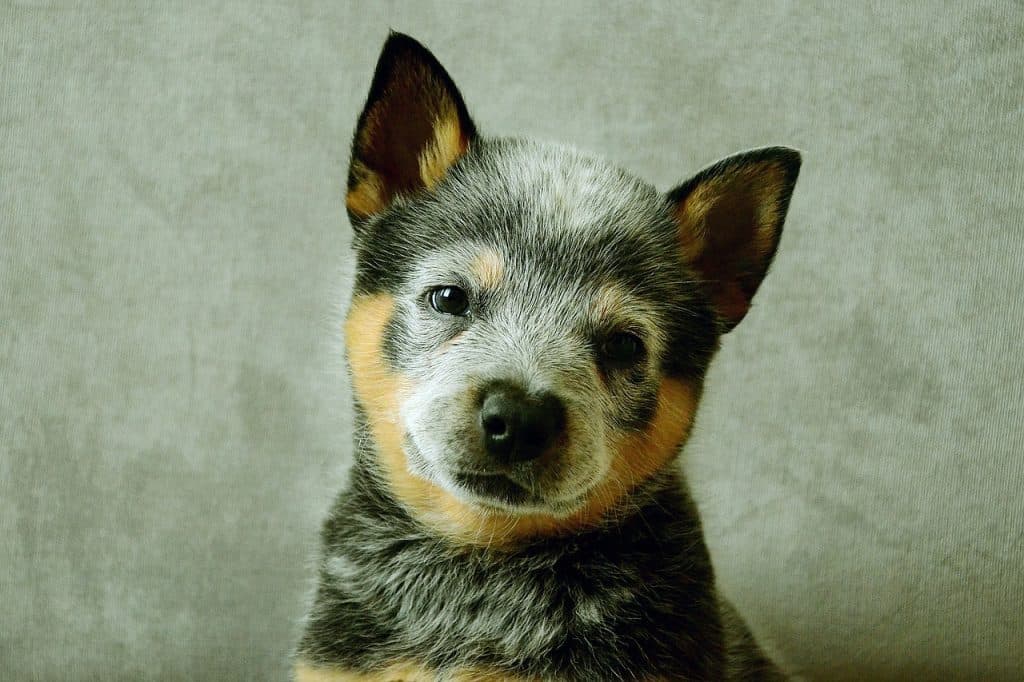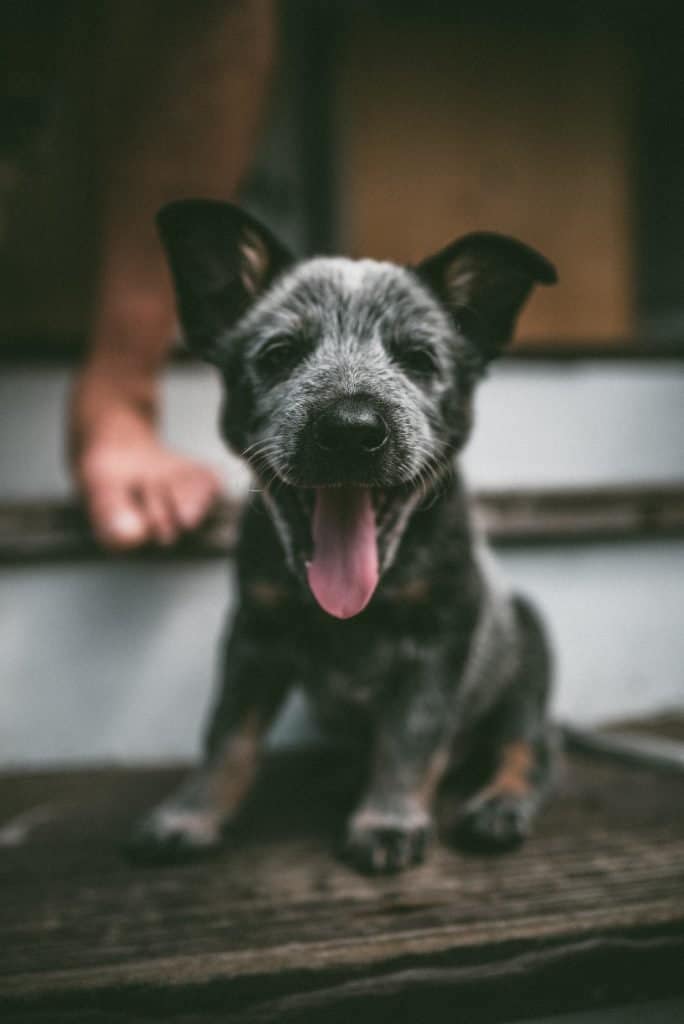Blue Heelers, also known as Australian Cattle Dogs, are renowned for their striking appearance and unparalleled working abilities. Their unique coat colors, including the iconic blue hue, are a critical characteristic that captures the hearts of dog enthusiasts around the world. If you’re eagerly asking, “When do Blue Heeler puppies get their color?” this article is your guide. Join us as we dive into the fascinating journey of when Blue Heeler puppies get their mesmerizing coat color!
What is a Blue Heeler Breed?
The Blue Heeler, officially known as the Australian Cattle Dog, originated in Australia as a brilliant and versatile herding breed. Renowned for its remarkable work ethic and unwavering loyalty, this breed has gained immense popularity around the globe.
- History and Purpose: Australian settlers developed the Blue Heeler breed in the 19th century, which needed a capable and resilient dog to handle herding cattle in harsh and rugged conditions. They sought a breed that could withstand the demanding Australian climate while exhibiting the intelligence, agility, and stamina required to control cattle effectively.
- Appearance: Blue Heelers are medium-sized dogs with a compact and muscular build. Their distinctive coat, which often displays a mesmerizing blue hue, is dense, weather-resistant, and requires minimal grooming. The breed’s eyes are typically dark and alert, reflecting their high level of intelligence and focus.
- Temperament and Personality: Known for their unwavering loyalty and strong work ethic, Blue Heelers are renowned for their exceptional trainability and desire to please their owners. They thrive on mental and physical stimulation and excel in various activities such as herding trials, obedience competitions, and agility courses. Due to their herding instincts, they may be protective of their family.
- Intelligence and Trainability: Blue Heelers are among the most intelligent dog breeds. They have a keen ability to problem-solve and are quick learners. However, their intelligence also demands a firm and consistent training approach to channel their energy and maintain their focus. Early socialization and positive reinforcement training are essential to raising a well-rounded and obedient Blue Heeler.
- Active Lifestyle Requirements: Blue Heelers thrive on physical exercise and mental stimulation as a working breed. They require regular opportunities for practice, including long walks, jogging, and interactive play sessions. Engaging them in mentally stimulating activities such as puzzle toys, obedience training, and herding exercises helps keep their minds sharp and prevents boredom.
- Family Companionship: While Blue Heelers are renowned for their working abilities, they can also make excellent family companions. They form strong bonds with their owners and are usually gentle and protective with children when properly socialized from a young age. However, due to their herding instincts, they may attempt to “herd” and nip at running children, which requires training and supervision.
The Blue Heeler, or Australian Cattle Dog, is a remarkable breed that combines intelligence, loyalty, and versatility. With their striking appearance, unwavering work ethic, and ability to adapt to various tasks, they have become beloved companions, working partners, and competitors in various dog sports. Their strong desire to please and intense drive to work make them ideal for active individuals or families looking for an intelligent and devoted canine companion.

When Do Blue Heeler Puppies Get Their Color?
The Pup’s Early Days
When Blue Heeler puppies are born, their coat is typically devoid of any significant coloration. Instead, the initial days are dominated by a soft, fuzzy coat, often white or cream-colored. The lack of color at this stage may leave you wondering if your pup will ever develop that distinctive Blue Heeler appearance.

Early Hints of Color
Around two to three weeks of age, a slight change in the puppy’s coat becomes apparent. Hints of color may emerge, usually around the face, ears, and paws. You might notice patches of tan, reddish, or black markings beginning to appear on their previously plain coat. These early signs are a thrilling indication of the beautiful transformation to come.

The Role of Genetics
Their genetic makeup primarily influences the color development of Blue Heeler puppies. This breed possesses a gene called the “D locus,” which determines its base color. This gene has two variants: “D” for full pigmentation and “d” for reduced pigmentation. The interaction between these genes ultimately decides the intensity and distribution of color on the pup’s coat.
The Arrival of Blue
The distinct blue color, for which the Blue Heeler is named, typically starts to appear between six to eight weeks of age. This beautiful shade develops as the puppy’s coat transitions from its initial lighter hues. Then, the blue coloration spreads across their body, starting from the face and extending to the back, sides, and tail. It’s an exciting milestone that truly sets Blue Heelers apart.

Splashes of Red
Alongside the emergence of blue, you may notice patches of red appearing on your Blue Heeler puppy’s coat. The red coloration can manifest as reddish-brown or copper markings, usually found on the legs, chest, and face. This interplay of blue and red creates a captivating and unique pattern that showcases the breed’s extraordinary beauty.
The Final Touches
As Blue Heeler puppies grow and mature, their coat coloration changes further. By the age of four to six months, most Blue Heelers have developed their primary coat color. However, it’s important to note that some puppies may experience additional shifts in their coat hues, intensifying or lightening certain areas. These final touches add character and individuality to each Blue Heeler’s appearance.

The Impact of Age
Just as puppies evolve, so does their coat color. As Blue Heelers reach adulthood, their coloration may continue to grow subtly. In addition, some dogs may experience a gradual darkening or lightening of their coat, influenced by factors such as exposure to sunlight and hormonal changes. This ongoing journey ensures that your Blue Heeler’s appearance remains dynamic and ever-interesting.
Blue Heeler Color Timeline
Blue Heelers’ striking appearance and incredible working abilities captivate dog lovers worldwide. However, one of their most distinctive features is their mesmerizing coat color. So if you’re eagerly awaiting the moment when your Blue Heeler puppy’s colors will start to show, we’ve got you covered. Join us as we journey through the weeks and months, revealing when these adorable puppies acquire their captivating coat hues.
- Weeks 1-3: The Arrival of Innocence: Blue Heeler puppies have soft and fuzzy, usually white or cream-colored coats during the first few weeks of their lives. Their appearance is a canvas waiting to be painted with vibrant colors, giving no hint of what will come.
- Weeks 3-4: Hints of Things to Come Around: You may notice subtle changes in your Blue Heeler puppy’s coat this time. Tiny patches of color, often tan, reddish, or black, may emerge on their face, ears, and paws. These glimpses of their future hues offer a thrilling glimpse into their impending transformation.
- Weeks 6-8: The Blue Unveiling: The magic begins between six to eight weeks of age. The renowned blue color, which gives Blue Heelers their name, starts to appear. It begins with their face, then gradually extends to their back, sides, and tail. Your puppy is turning into the stunning Blue Heeler you’ve dreamed of!
- Weeks 8-12: Radiant Reds: Alongside the blue hues, vibrant patches of red may also become more pronounced. These reddish-brown or copper markings appear on their legs, chest, and face, contrasting their evolving coat. The interplay between blue and red creates a unique and captivating pattern that separates Blue Heelers.
- Months 4-6: The Final Flourish: By age four to six months, most Blue Heelers have fully developed their primary coat color. However, don’t be surprised if your puppy continues to experience subtle shifts in hues. Some areas may darken or lighten, adding personality and individuality to their appearance. During this time, your Blue Heeler’s color palette becomes complete.
- Adulthood: Ever-Evolving Beauty: As your Blue Heeler matures, its coat color may continue subtly evolving. Factors such as exposure to sunlight and hormonal changes can influence their overall coloration. You might notice gradual darkening or lightening of their coat, adding further depth and richness to their appearance. Embrace the dynamic nature of their colors as they grow into magnificent adult dogs.

Conclusion
The transformation of Blue Heeler puppies from plain and pale to the magnificent and vibrant dogs we know and love is a remarkable process. As these puppies grow, their coat coloration gradually emerges, beginning with hints of tan or black and eventually blossoming into the breathtaking combination of blue and red. Remember, each Blue Heeler’s color journey is unique, influenced by their genetics and developmental timeline. Therefore, patience is critical as you eagerly await the full expression of your Blue Heeler’s stunning coat.

